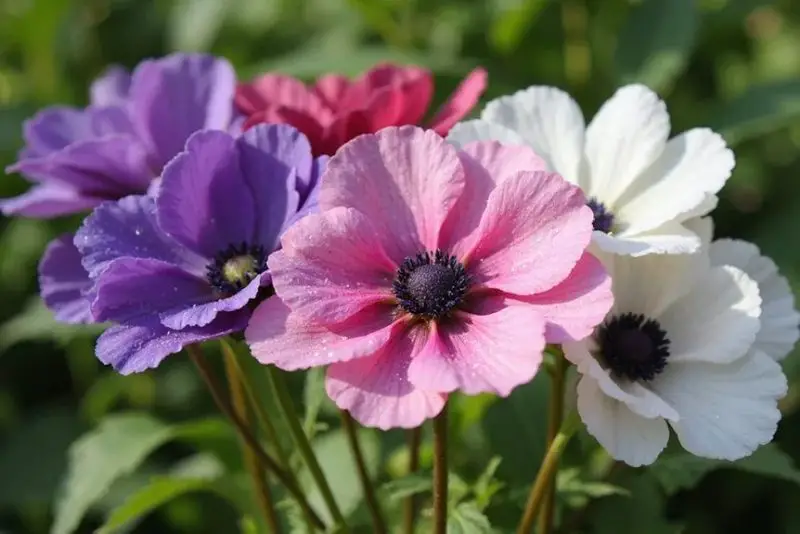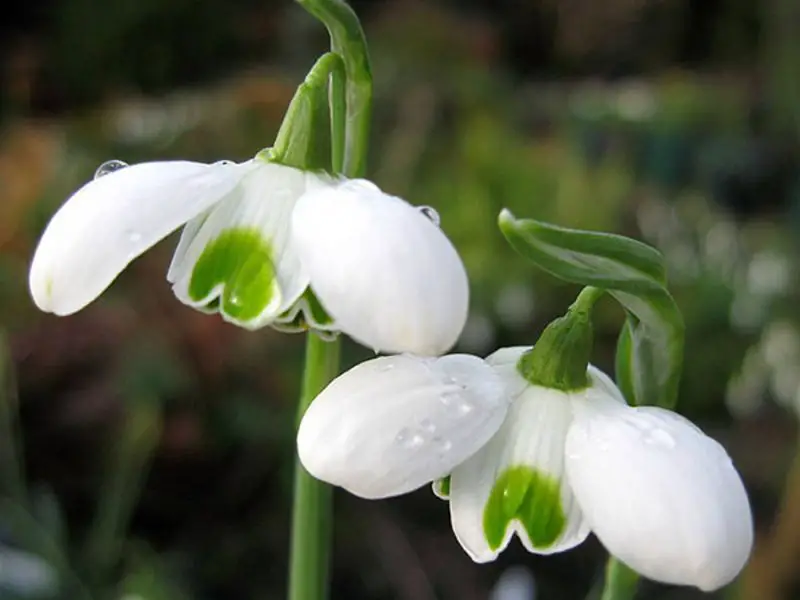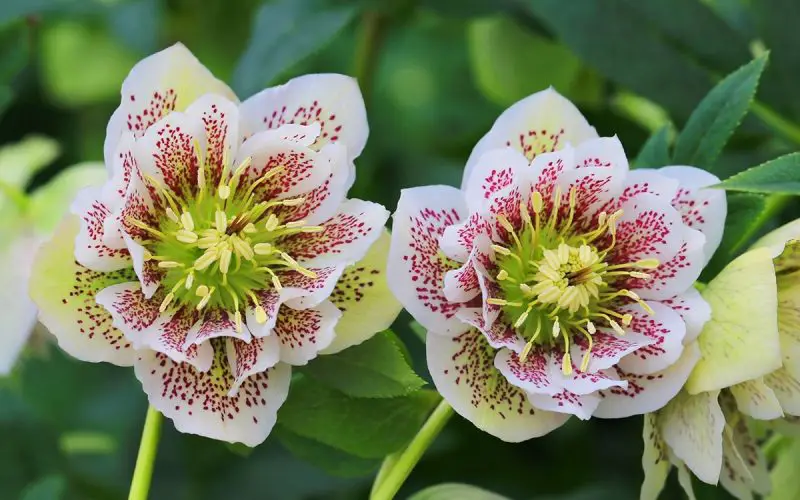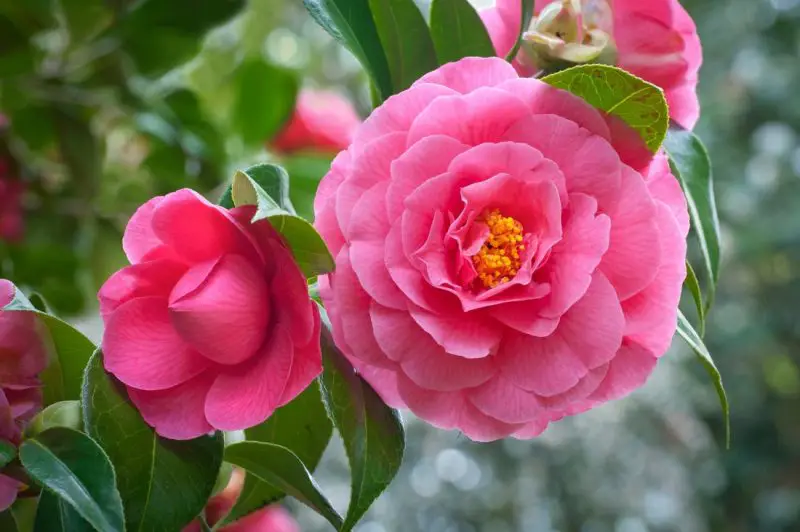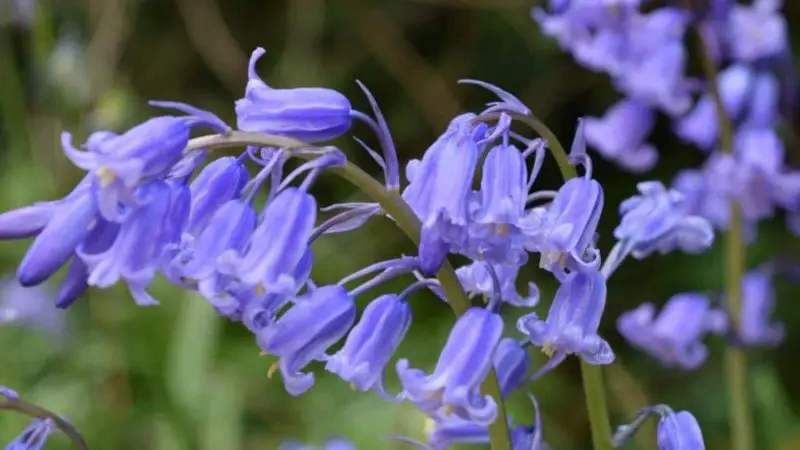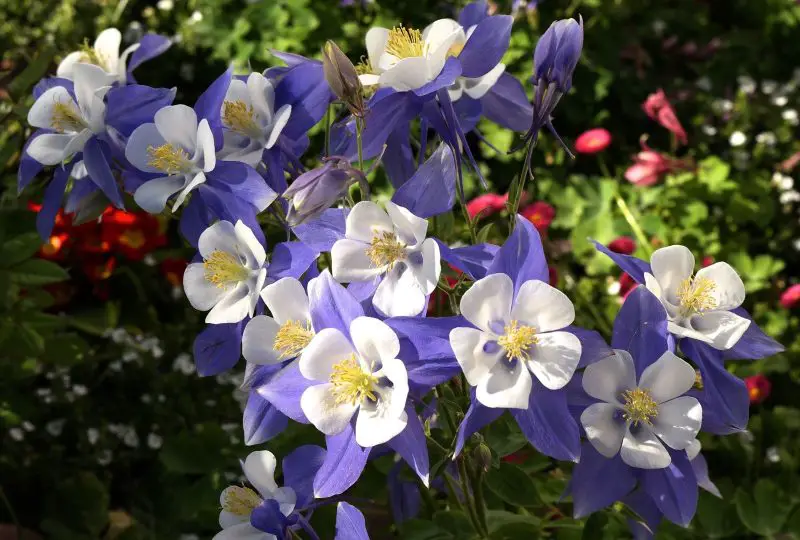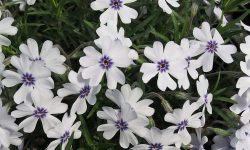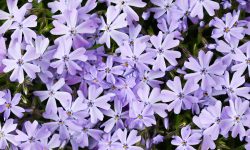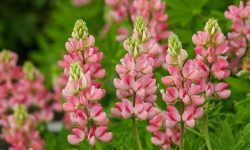When winter fades and the first rays of warmth touch the soil, nature awakens with breathtaking beauty. In What Flowers Bloom in Spring? Best Choices for a Vibrant Garden, we explore the blooms that define this magical season — from the radiant tulip and daffodil to the delicate crocus and lilac. Spring flowers not only fill gardens with color and fragrance but also symbolize renewal, hope, and joy. By choosing the right mix of early and late bloomers, you can create a garden that bursts with continuous color and life. Let’s uncover the most stunning spring flowers and how to help them flourish beautifully in your garden.
As spring unfolds, the garden becomes a living tapestry of colors, shapes, and fragrances. Each flower plays its part in announcing the season’s arrival, from delicate early bloomers to bold, show-stopping varieties. Among them, tulips stand as timeless icons of spring — vibrant, graceful, and endlessly diverse. Let’s begin our journey into the world of spring flowers with one of its brightest stars: the beautiful tulip.
Tulips (Tulipa spp.)

Tulips are among the most iconic spring flowers, admired for their perfect cup-shaped blooms and vast range of colors. Native to Central Asia and Turkey, these flowers have become a global symbol of spring’s renewal. Each tulip stands elegantly on a single, sturdy stem, surrounded by lance-shaped green leaves that contrast beautifully with its vibrant petals. Depending on the variety, tulip blossoms can appear smooth, fringed, or double-layered, creating a striking texture in both garden beds and floral arrangements.
Tulips come in a stunning spectrum of colors, from pure white and pastel pink to fiery red, golden yellow, deep purple, and even bicolor patterns. Most tulips grow between 10 and 24 inches tall, making them perfect for borders, containers, and mass plantings. Their bloom time generally spans from early to late spring, depending on the cultivar. Early-blooming types such as ‘Fosteriana’ appear in March, while late varieties like ‘Darwin Hybrid’ continue flowering into May, ensuring weeks of color in your garden.
These flowers thrive in USDA hardiness zones 3 through 8, preferring regions with cold winters and mild springs. Tulips require a period of winter chill to trigger proper flowering, which makes them ideal for temperate climates. They prefer full sun to partial shade and well-draining soil with a slightly sandy or loamy texture. In warmer zones, gardeners often treat tulips as annuals, replanting bulbs each fall to maintain strong blooms.
To plant tulips successfully, place bulbs 6 to 8 inches deep in the fall, ensuring the pointed end faces upward. Space them about 4 inches apart for even coverage. Water well after planting, then allow the soil to dry slightly during winter dormancy. Once growth begins in spring, water moderately and avoid overwatering. After blooming, let the leaves die back naturally to nourish the bulb for next year’s growth. With minimal care, tulips reward you with a spectacular spring display year after year.
Daffodils (Narcissus spp.)
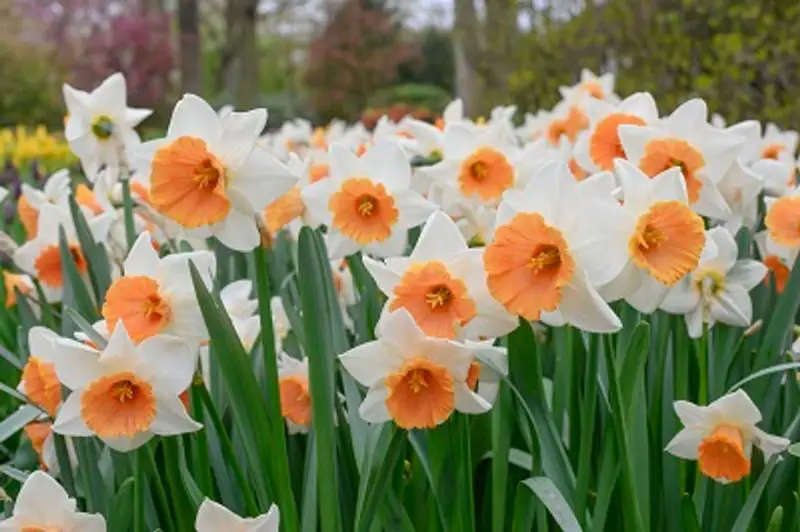
Daffodils are cheerful harbingers of spring, instantly recognizable by their trumpet-shaped centers surrounded by petal-like tepals. Native to Europe and North Africa, they are celebrated for their bright and welcoming appearance. Each flower grows from a bulb and sits atop a slender green stem, with narrow, strap-like leaves at its base. Their upright growth and structured form make them ideal for both formal garden designs and naturalized meadow plantings.
The most familiar daffodil color is sunny yellow, but they also bloom in shades of white, cream, orange, and even pink. Some varieties display bicolor patterns, featuring contrasting coronas and petals for added charm. Daffodils typically range in height from 8 to 20 inches, depending on the species and cultivar. They bloom from early to mid-spring, often coinciding with the first tulips, and can last several weeks in mild weather. Their sturdy stems and long-lasting blooms also make them excellent cut flowers for indoor arrangements.
These resilient bulbs thrive in USDA hardiness zones 3 through 9, adapting well to both cool and temperate regions. They prefer full sun to partial shade and well-drained soil that remains slightly moist during the growing season. Daffodils are low-maintenance and deer-resistant, making them a favorite among gardeners seeking reliability and resilience. Once established, they can naturalize easily, returning year after year with minimal care.
To plant daffodils, bury bulbs about 6 inches deep and 4 to 6 inches apart in the fall before the ground freezes. Water thoroughly after planting and allow the bulbs to rest through winter. In spring, provide moderate moisture but avoid soggy conditions. After blooming, allow the foliage to yellow and die back naturally, as it helps store energy for next year’s growth. With proper planting and care, daffodils fill your garden with a joyful burst of color every spring, symbolizing hope and renewal.
Hyacinths (Hyacinthus orientalis)
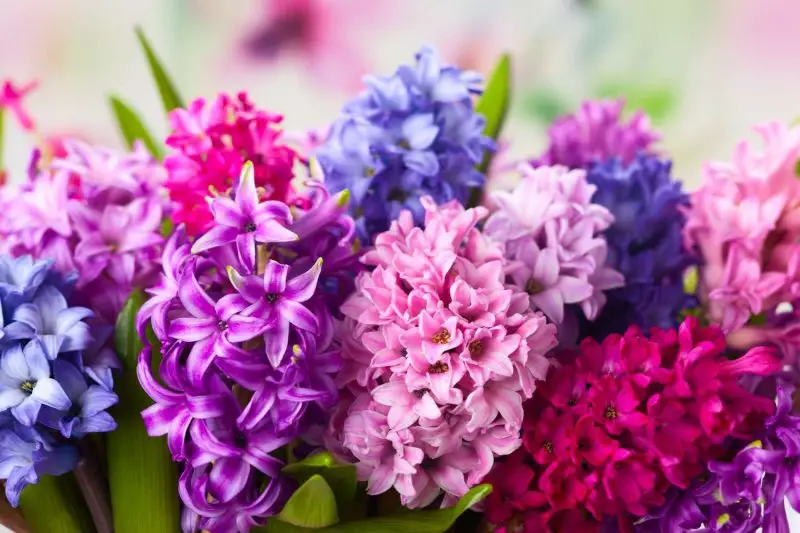
Hyacinths are among the most fragrant spring flowers, known for their dense spikes of star-shaped blooms and captivating perfume. Native to the eastern Mediterranean, particularly Turkey and Syria, these flowers bring an unmistakable elegance to gardens and patios. Each hyacinth bloom cluster forms a tight column of dozens of small flowers atop a thick, fleshy stem, surrounded by narrow, glossy green leaves that emerge directly from the bulb. Their striking structure and vibrant presence make them a centerpiece in any spring display.
Hyacinths bloom in a dazzling range of colors — from soft pastels like pink, lavender, and sky blue to deep hues of purple, red, and white. On average, plants grow 8 to 12 inches tall, making them perfect for borders, window boxes, and container gardening. They typically flower in early to mid-spring, often overlapping with tulips and daffodils. Each bloom cluster can last up to two weeks, especially in cooler weather. Their rich fragrance also attracts pollinators such as bees and butterflies, adding life and motion to spring gardens.
These bulbs thrive best in USDA hardiness zones 4 through 8, preferring regions with cold winters that allow bulbs to rest before spring bloom. Hyacinths grow well in full sun to partial shade and require well-drained soil with moderate fertility. In heavy clay soils, mixing in sand or compost improves drainage and helps prevent bulb rot. Because of their compact size and strong scent, hyacinths are also popular for indoor forcing, bringing spring’s freshness indoors during the late winter months.
To plant hyacinths, set bulbs about 4 to 6 inches deep and 3 to 4 inches apart in the fall. Water them thoroughly after planting to help establish roots. During their growing season, keep the soil slightly moist but never waterlogged. Once flowers fade, cut off the bloom stalk but allow leaves to remain until they yellow, storing nutrients for next year. With the right conditions, hyacinths return annually with vibrant color and enchanting fragrance, signaling spring’s joyful arrival.
Crocuses (Crocus spp.)

Crocuses are among the earliest signs of spring, often blooming while snow still lingers on the ground. These small but charming flowers belong to the iris family and are native to Europe, North Africa, and Asia. Each crocus plant produces cup-shaped blossoms that rise directly from a corm, accompanied by narrow, grass-like leaves with a distinctive white stripe running down the center. Their petite size and delicate appearance make them a perfect choice for rock gardens, borders, and naturalized lawns.
Crocuses bloom in an enchanting range of colors, including purple, lavender, white, yellow, and even striped varieties. They typically grow 3 to 6 inches tall, making them one of the most compact yet impactful early bloomers. Depending on the species, some crocuses flower as early as late winter, while others open in mid to late spring. The blooms open on sunny days and close at night or in cloudy weather, adding a dynamic rhythm to garden life. Their bright colors attract pollinators like bees, helping signal the awakening of nature after winter dormancy.
Crocuses thrive in USDA hardiness zones 3 through 8 and prefer cooler climates with well-draining soil. They perform best in full sun but can also tolerate partial shade. These resilient flowers are drought-tolerant once established, making them ideal for low-maintenance gardeners. When planted in clusters or drifts, crocuses can naturalize easily, multiplying year after year to create stunning carpets of color across garden beds and open lawns.
To plant crocuses, set corms about 3 inches deep and 2 to 3 inches apart in the fall before the ground freezes. Choose a spot with good drainage to prevent rot during winter moisture. Water thoroughly after planting and then sparingly through the colder months. Once they bloom, allow the foliage to remain until it withers naturally, replenishing nutrients for the next season. With minimal effort, crocuses reward you each spring with bursts of color that bring early warmth and cheer to the landscape.
Irises (Iris germanica)
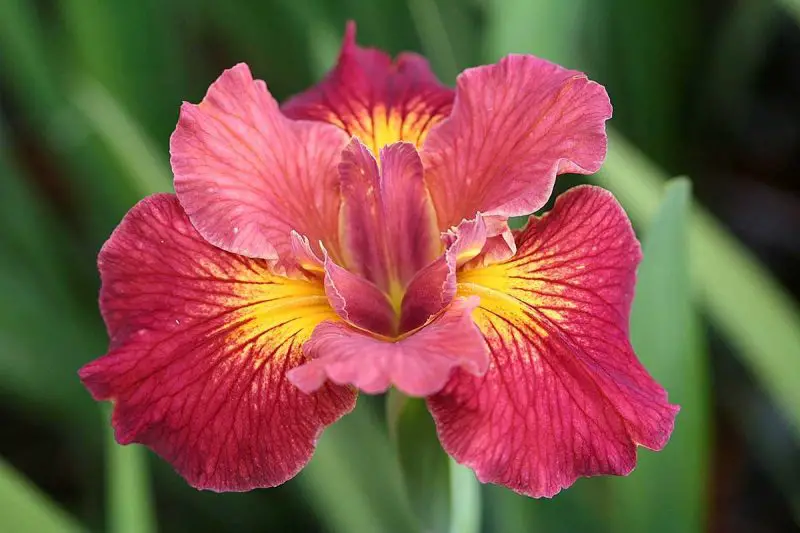
Irises are among the most elegant and dramatic spring flowers, known for their unique, sculptural blooms and sword-like foliage. The bearded iris, Iris germanica, is one of the most beloved species, valued for its wide variety of colors and graceful form. Native to the Mediterranean region, this perennial produces tall, sturdy stems that hold intricate flowers made up of three upright petals (standards) and three downward-curving petals (falls). Their distinctive “beard” — a fuzzy line of colored hairs on the falls — gives the plant its name and adds visual texture to the garden.
Irises bloom in an astonishing range of hues, including purples, blues, whites, yellows, pinks, and even bicolors with striking contrasts. Most bearded irises grow between 2 and 3 feet tall, though dwarf and intermediate varieties also exist. The flowers typically appear from mid to late spring, each lasting a few days, but multiple buds per stem ensure a long-lasting display. Their upright, fan-shaped foliage remains attractive even after flowering, contributing structure and greenery throughout the summer months.
Bearded irises thrive best in USDA hardiness zones 3 through 9, preferring full sun and well-drained soil. They do exceptionally well in raised beds or slopes where water drains quickly, as excessive moisture can lead to rhizome rot. These hardy plants are drought-tolerant once established and require minimal maintenance. They are also deer- and rabbit-resistant, making them a reliable choice for long-term garden beauty.
To plant irises, set rhizomes horizontally with the top just exposed to the air and roots spread out beneath. Space plants 12 to 18 inches apart to allow airflow and prevent disease. Water deeply after planting, then reduce watering as plants become established. Divide clumps every three to four years to maintain vigor and prevent overcrowding. With proper care, irises return each spring with bold, artistic blooms that lend timeless sophistication to any garden landscape.
Lilacs (Syringa vulgaris)
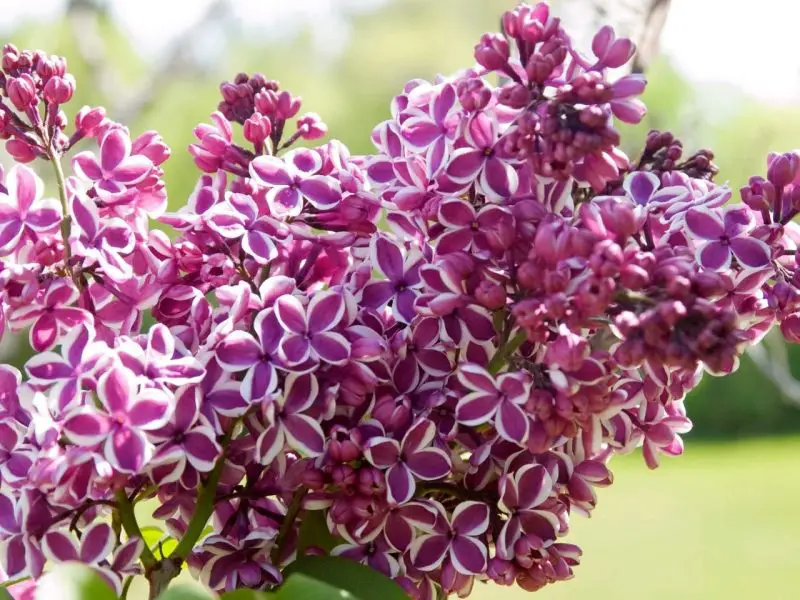
Lilacs are timeless spring favorites, cherished for their nostalgic fragrance and clusters of delicate, tubular blossoms. Native to southeastern Europe, Syringa vulgaris has long been a symbol of love and renewal. These deciduous shrubs feature heart-shaped leaves and woody stems that form dense, rounded growth. Each spring, they burst into lavish panicles of small, star-like flowers that release a sweet scent carried easily by the breeze. Their perfume is one of the most recognizable fragrances in the garden world, evoking memories of cottage gardens and classic springtime charm.
Lilacs bloom in a stunning palette of purples, lavenders, pinks, whites, and even blues. Mature shrubs typically grow between 8 and 15 feet tall, with a spread of 6 to 12 feet, depending on the cultivar. Bloom time varies by variety but generally falls between mid and late spring, often lasting for two to three weeks. Some modern hybrids, known as reblooming lilacs, can flower again in late summer, offering extended beauty. Beyond their visual and aromatic appeal, lilacs attract pollinators such as butterflies and bees, enhancing garden biodiversity.
These robust shrubs grow best in USDA hardiness zones 3 through 7, thriving in cool climates with distinct winters. They prefer full sun for at least six hours a day and well-drained, slightly alkaline soil. While lilacs tolerate a range of soil types, poor drainage can lead to root problems. Once established, they are hardy and drought-tolerant, requiring little more than seasonal pruning to maintain shape and encourage new growth. Lilacs are also deer-resistant, making them a practical and long-lived addition to any landscape.
To plant lilacs, dig a hole twice as wide as the root ball and deep enough to place the crown at soil level. Water thoroughly after planting and apply mulch to conserve moisture. During the growing season, water weekly if rainfall is low. After blooming, prune spent flowers and thin old stems to promote airflow and prevent mildew. Fertilize lightly in early spring with a balanced formula to support strong flowering. With minimal care, lilacs will reward you year after year with heavenly fragrance and abundant spring blossoms that never go out of style.
Peonies (Paeonia lactiflora)
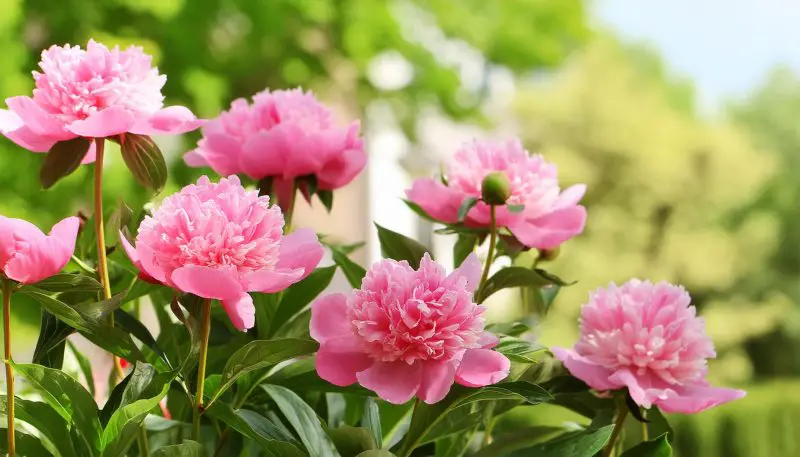
Peonies are the embodiment of spring elegance, admired for their lush, voluminous blooms and sweet fragrance. Native to China, Paeonia lactiflora has been cultivated for centuries as a symbol of prosperity and romance. Each plant forms a mound of glossy, dark green foliage, topped by large, showy flowers that can span up to 8 inches across. The blossoms may be single, semi-double, or fully double, depending on the variety, and their graceful, ruffled petals give them an almost luxurious appearance. Peonies are long-lived perennials, often thriving for decades in the same location once properly established.
These stunning flowers bloom in a wide range of colors, including white, blush pink, deep red, coral, and even soft yellow. Most varieties grow between 2 and 3 feet tall, with sturdy stems that hold their heavy blooms upright. Peonies typically bloom from late spring to early summer, bridging the gap between early spring bulbs and midsummer perennials. Their long-lasting blooms make them a favorite for bouquets, weddings, and garden borders. When not in bloom, their attractive foliage continues to provide texture and greenery throughout the growing season.
Peonies thrive best in USDA hardiness zones 3 through 8, preferring cool winters and mild springs. They require full sun and well-drained, fertile soil rich in organic matter. Although they tolerate brief droughts once established, consistent moisture during the growing season promotes better flowering. Because peonies dislike disturbance, they should be planted in a permanent spot where they can grow undisturbed for many years. Avoid planting too deeply, as this can prevent blooming.
To plant peonies, position the eyes (buds) no more than 2 inches below the soil surface. Water thoroughly after planting and mulch lightly to retain moisture and protect roots. In spring, remove old mulch and add compost to nourish new growth. After flowering, deadhead spent blooms to encourage plant vigor. Cut back stems to the ground after frost to prevent disease. With minimal care and patience, peonies reward gardeners each spring with breathtaking blooms that symbolize grace and longevity.
Pansies (Viola × wittrockiana)

Pansies are among the most cheerful and versatile spring flowers, beloved for their bright “faces” and compact growth habit. A hybrid derived from several wild viola species, pansies have been cultivated since the 19th century for their extraordinary range of colors and patterns. Each flower features five rounded petals, often with a dark central blotch resembling a painted face. The plants form low-growing mounds of heart-shaped leaves, making them ideal for borders, containers, and window boxes. Their charming appearance and cool-season hardiness make them one of the most dependable flowers for early spring gardens.
Pansies bloom in nearly every color imaginable, including purple, blue, yellow, orange, red, and white, often in striking combinations. They typically grow between 6 and 9 inches tall and spread about 8 to 12 inches wide, creating dense, colorful patches. These flowers flourish during the cooler months of spring and can continue blooming into early summer in mild climates. In regions with cool autumns, pansies may also bloom again after summer heat fades. Their long blooming period and rich variety make them a favorite for both novice and experienced gardeners seeking instant color.
Pansies thrive in USDA hardiness zones 4 through 8, preferring full sun to partial shade. They perform best in moist, well-drained soil rich in organic matter. Cooler temperatures enhance their color intensity and prolong flowering, while excessive heat can cause them to fade. Because of their resilience, pansies are often planted as annuals or biennials, providing vivid displays in both spring and fall gardens. They’re also relatively pest-resistant and attract butterflies, adding life and brightness to every corner of the yard.
To grow pansies successfully, plant nursery-grown seedlings in early spring as soon as the soil can be worked. Space them about 6 to 8 inches apart to allow good airflow and prevent fungal diseases. Water regularly, keeping the soil evenly moist but never soggy. Deadhead spent blooms frequently to encourage continuous flowering. Applying a balanced fertilizer every few weeks helps sustain vibrant color and lush growth. With minimal effort, pansies fill gardens with joy, their smiling faces welcoming spring with warmth and charm.
Primroses (Primula vulgaris)
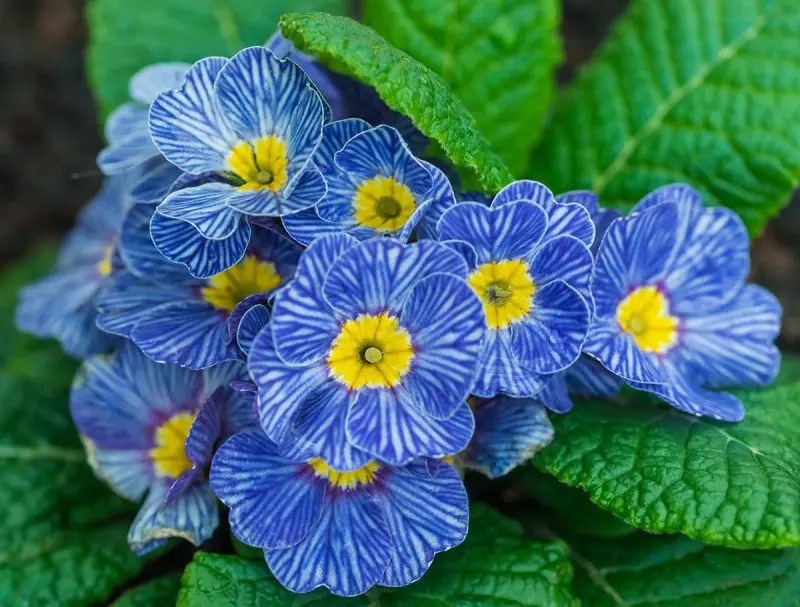
Primroses are classic spring bloomers that bring a burst of cheerful color to gardens just as winter fades away. Native to Europe and western Asia, Primula vulgaris is one of the earliest perennials to flower in spring. Each plant forms a low rosette of crinkled, oval-shaped leaves that serve as a lush green base for its delicate blooms. The flowers emerge on short stems, each with a single five-petaled blossom, creating a soft and elegant appearance. Their name, derived from “prima rosa,” means “first rose,” symbolizing their early arrival each spring.
Primroses display an enchanting palette of colors, including yellow, pink, red, blue, purple, and white, often with contrasting centers. They typically grow between 6 and 12 inches tall, making them perfect for garden edges, rock gardens, and shaded walkways. Primroses bloom from early to mid-spring, sometimes extending into late spring in cooler climates. Their compact size and bright hues make them excellent for mass planting, containers, or pairing with spring bulbs like daffodils and tulips. Their blooms attract pollinators such as bees and butterflies, adding life and activity to early-season gardens.
These hardy perennials thrive in USDA hardiness zones 3 through 8, preferring partial shade and cool, moist conditions. They grow best in well-drained, humus-rich soil that retains moisture without becoming waterlogged. Primroses appreciate cooler temperatures and tend to decline in extreme summer heat, making them ideal for woodland or shaded garden areas. When properly placed, they reward gardeners with long-lasting color and vigorous growth, often forming attractive colonies over time through self-seeding and division.
To plant primroses, space them 8 to 10 inches apart in soil enriched with compost or leaf mold. Keep the soil consistently moist but not soggy during the growing season. Water early in the day to avoid leaf diseases caused by nighttime moisture. Deadhead spent flowers to encourage continued blooming, and apply a balanced fertilizer every few weeks for lush foliage. After flowering, trim back old leaves to maintain a tidy appearance. With consistent care, primroses return each spring, brightening shady corners with their delightful color and natural grace.
Magnolias (Magnolia × soulangeana)

Magnolias are among the most breathtaking spring-flowering trees, renowned for their large, waxy blooms and elegant form. The hybrid Magnolia × soulangeana, also known as the saucer magnolia, is one of the most popular varieties cultivated worldwide. This deciduous tree or large shrub produces spectacular cup-shaped flowers that can reach up to 10 inches across. The blossoms emerge on bare branches before the leaves appear, creating a stunning visual contrast that defines the early spring landscape. With their graceful silhouette and sweet fragrance, magnolias embody the essence of spring renewal.
Saucer magnolias display a beautiful range of colors, from creamy white and soft pink to deep rose and purple. The tree typically grows 15 to 25 feet tall, with a similar spread, forming a rounded, spreading canopy. Blooming usually begins in early to mid-spring, depending on climate, and may last for several weeks if weather conditions remain cool. The flowers’ bold appearance and gentle scent make magnolias a focal point in any garden or front yard. After flowering, the tree produces dark green, leathery leaves that provide shade and texture throughout the growing season.
Magnolias thrive in USDA hardiness zones 4 through 9, preferring full sun to partial shade and slightly acidic, well-drained soil. They perform best in locations sheltered from strong winds, which can damage their early blooms. These trees are moderately hardy but may suffer from late spring frosts in colder regions, so planting in a protected site is ideal. Once established, magnolias are relatively low-maintenance, requiring only occasional pruning to shape the canopy and remove dead wood. Their deep root systems make them long-lived and resilient additions to the landscape.
To plant magnolias, dig a wide hole twice as large as the root ball and position the tree so the root flare sits at ground level. Backfill with rich, well-draining soil and water thoroughly. Apply mulch around the base to retain moisture and regulate soil temperature, but keep it away from the trunk to prevent rot. Water regularly during the first few years to help roots establish, then reduce frequency as the tree matures. Avoid heavy pruning, as magnolias prefer minimal disturbance. With patience and care, these majestic trees will reward you each spring with breathtaking flowers that symbolize purity, beauty, and resilience.
Bleeding Hearts (Lamprocapnos spectabilis)

Bleeding Hearts are among the most romantic and graceful spring perennials, instantly recognizable by their heart-shaped blossoms that seem to “bleed” a delicate drop of white or pink. Native to East Asia, Lamprocapnos spectabilis is admired for both its striking beauty and soft, fern-like foliage. Each arching stem bears a row of pendulous flowers, forming a natural garland that sways gently in the breeze. When planted in shaded or woodland gardens, these flowers create a captivating, fairy-tale atmosphere that draws admiration from every visitor.
The signature flowers of the bleeding heart are usually deep pink with white tips, though cultivars in pure white or red also exist. Each plant typically grows 24 to 36 inches tall and 18 to 30 inches wide, forming elegant mounds of finely divided, blue-green leaves. Blooming begins in mid to late spring and can continue for several weeks in cool, moist conditions. As summer heat arrives, the foliage may die back naturally — a normal part of the plant’s life cycle. This ephemeral beauty makes bleeding hearts a perfect companion for hostas, ferns, and other shade-loving perennials that fill the space once they fade.
Bleeding Hearts thrive best in USDA hardiness zones 3 through 9, preferring partial to full shade and rich, well-drained soil. They flourish in cool, moist environments and dislike dry or compacted ground. Adding organic matter such as compost or leaf mold improves soil texture and helps maintain consistent moisture levels. In warmer climates, they benefit from protection against afternoon sun to prevent stress and premature dormancy. These plants are deer-resistant and rarely affected by pests, making them a dependable choice for natural gardens.
To plant bleeding hearts, space them about 18 inches apart and cover roots with 1 to 2 inches of soil. Water thoroughly after planting and keep the soil evenly moist, especially during the growing season. Apply a thin layer of mulch to retain moisture and regulate temperature. After flowering, remove faded blooms to encourage continued blooming, and allow foliage to die back naturally before trimming. Avoid over-fertilizing, as too much nitrogen encourages foliage over flowers. With proper care, bleeding hearts return each spring with their iconic, heart-shaped blossoms, adding elegance and emotion to every shaded corner of the garden.
Azaleas (Rhododendron spp.)

Azaleas are among the most beloved spring-flowering shrubs, celebrated for their breathtaking masses of colorful blooms. Belonging to the Rhododendron genus, azaleas include both evergreen and deciduous varieties, each bringing vibrant life to gardens and landscapes. They produce clusters of trumpet-shaped flowers that blanket the shrub in color, often appearing before the foliage fully develops. Their compact growth habit, elegant form, and rich floral display make azaleas a timeless favorite in both formal gardens and woodland settings.
Azaleas bloom in a dazzling spectrum of colors, including pink, red, purple, orange, yellow, and white. Depending on the species and cultivar, they range in size from small, 2-foot mounding shrubs to larger varieties that reach up to 10 feet tall. Bloom time varies from early to late spring, with some varieties extending into early summer. The flowers can last for several weeks, especially in cooler climates. Their lush blooms attract hummingbirds and pollinators, adding dynamic life to shaded borders, garden beds, and woodland pathways.
These stunning shrubs thrive best in USDA hardiness zones 5 through 9, depending on the variety. They prefer partial shade and acidic, well-drained soil rich in organic matter. Azaleas thrive under the filtered light of tall trees, replicating their natural woodland habitat. While they enjoy consistent moisture, they are sensitive to overwatering and poor drainage, which can cause root rot. Mulching with pine bark or pine needles helps maintain soil acidity and retain moisture, ensuring healthy roots and prolonged blooming.
To plant azaleas, dig a shallow, wide hole and position the root ball so the top sits slightly above the soil surface. Backfill with a mix of native soil and organic matter, then water deeply to settle roots. Apply a thick mulch layer around the base but keep it away from the stem. During the growing season, water regularly but allow the soil to dry slightly between waterings. Prune lightly after flowering to shape the shrub and remove spent blooms. Fertilize in late winter or early spring using an acid-forming fertilizer. With the right care, azaleas will flourish for decades, filling your garden with vibrant color and springtime serenity.
Dogwoods (Cornus florida)
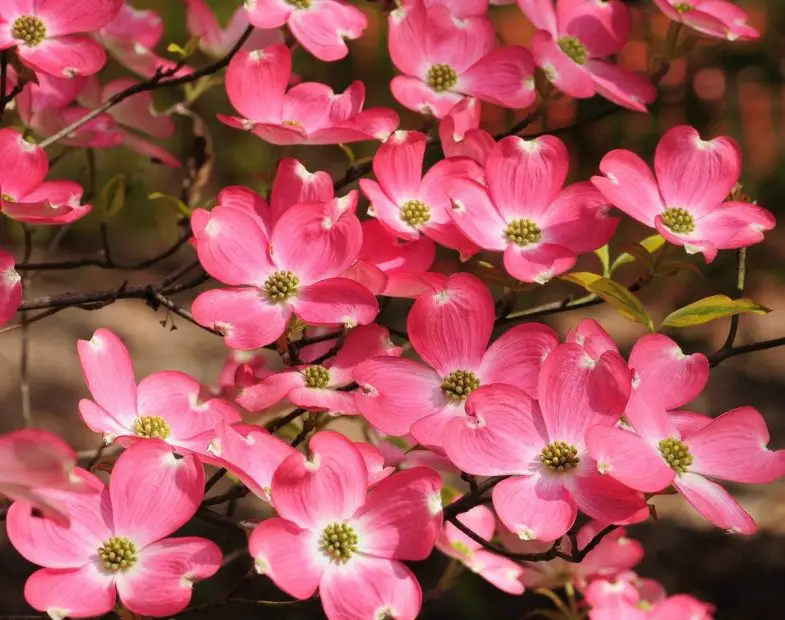
Dogwoods are among the most graceful flowering trees of spring, admired for their showy blossoms, layered branching, and year-round interest. Native to the eastern United States, Cornus florida stands out with its delicate petal-like bracts that surround small central flowers. These bracts, often mistaken for petals, open wide to create a stunning, cross-shaped bloom. Each tree features smooth gray bark, oval green leaves, and an elegant, horizontal branching habit that provides a sculptural presence even when not in flower. Dogwoods are cherished for their beauty, longevity, and ability to enhance both natural and formal landscapes.
The blooms of the dogwood appear in shades of white, pink, or red, depending on the variety. Flowering typically occurs in early to mid-spring, often before the leaves fully emerge, creating a spectacular display of color against the bare branches. Mature trees reach 20 to 30 feet in height, with a similar spread, forming a graceful canopy ideal for small gardens or understory plantings. After flowering, the tree produces glossy red berries that attract birds, followed by rich red and purple foliage in fall, ensuring beauty through multiple seasons.
Dogwoods thrive best in USDA hardiness zones 5 through 9, preferring partial shade and rich, well-drained soil with consistent moisture. They naturally grow beneath taller trees, so filtered sunlight replicates their ideal woodland environment. While tolerant of some sun, they prefer protection from harsh afternoon light, especially in warmer regions. Dogwoods are moderately drought-tolerant once established but benefit from mulching and regular watering during dry periods. Their shallow root systems make them sensitive to soil compaction and poor drainage, so gentle care around their root zones is essential.
To plant dogwoods, dig a hole twice as wide as the root ball and slightly shallower than its depth. Place the tree so the root flare is visible above the soil surface, then backfill with enriched, loose soil. Water deeply and apply a 2- to 3-inch layer of mulch, keeping it away from the trunk. Prune only after flowering to maintain structure and remove dead or weak branches. Fertilize sparingly in early spring with a slow-release formula. With thoughtful care and the right conditions, dogwoods reward gardeners with a breathtaking display of blossoms each spring, symbolizing renewal and enduring beauty.
Cherry Blossoms (Prunus serrulata)

Cherry Blossoms are among the most iconic symbols of spring, celebrated for their fleeting beauty and cultural significance. Native to Japan, Prunus serrulata — the Japanese flowering cherry — transforms landscapes into breathtaking clouds of pink and white. These deciduous trees feature smooth, reddish-brown bark and oval, serrated leaves that appear after the flowers. The blossoms emerge in dense clusters, covering the branches so completely that they seem to glow against the blue spring sky. Their delicate petals and graceful form embody the spirit of renewal and transience that defines the season.
Cherry blossoms bloom in shades ranging from pure white to soft pink and deep rose, depending on the variety. Flowers typically appear from late March to early May, lasting one to two weeks depending on weather conditions. Mature trees reach heights of 15 to 25 feet with a spread of 20 to 30 feet, forming a rounded or umbrella-shaped canopy. Popular cultivars such as ‘Kanzan’ and ‘Yoshino’ are prized for their abundant double blooms and elegant growth habit. After flowering, the trees develop glossy green leaves that turn vibrant shades of red and orange in fall, adding seasonal interest beyond spring.
These ornamental trees thrive best in USDA hardiness zones 5 through 8, preferring full sun and well-drained, loamy soil. They grow well in temperate climates with cool winters and mild springs. Cherry blossoms appreciate consistent moisture but dislike standing water or compacted soil. Planting them in areas protected from strong winds and frost ensures optimal blooming. Although delicate, they are surprisingly resilient once established and adapt well to urban environments, parks, and large gardens.
To plant cherry blossoms, dig a hole twice the width of the root ball and just as deep. Position the tree so the root flare is slightly above ground level and backfill with fertile soil mixed with compost. Water thoroughly after planting and apply mulch to conserve moisture and regulate temperature. Prune lightly after flowering to remove dead or crossing branches, but avoid heavy pruning, which can stress the tree. Fertilize in early spring with a balanced, slow-release fertilizer to support healthy growth. With proper care, cherry blossoms will grace your garden each spring with their ephemeral beauty, creating a timeless scene of serenity and joy.
Forsythias (Forsythia × intermedia)
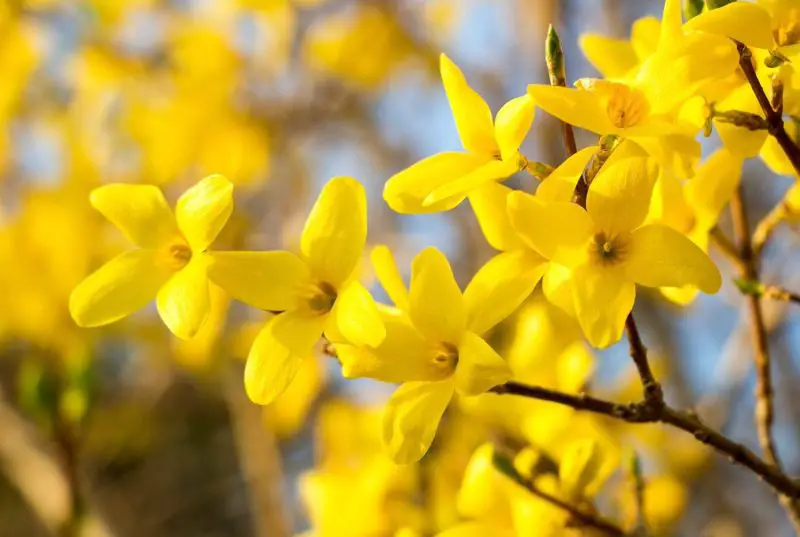
Forsythias are among the earliest heralds of spring, their golden-yellow blooms lighting up gardens before most other plants awaken. A hybrid species native to Asia and Europe, Forsythia × intermedia is beloved for its brilliant color and fast growth. This deciduous shrub features long, arching stems that burst into masses of small, four-petaled flowers, often appearing before the leaves. When in full bloom, the entire shrub glows with sunshine-yellow blossoms, creating one of the most cheerful sights in early spring. Forsythias are a favorite choice for hedges, borders, and foundation plantings due to their vibrant presence and adaptability.
The flowers of forsythia are bright golden-yellow and cover the stems densely, lasting several weeks. After blooming, the shrub produces green, oval leaves that remain attractive throughout the summer. Mature plants typically reach 6 to 10 feet tall and wide, though compact varieties are available for smaller spaces. Forsythias bloom from late winter to early spring, depending on the region, and often coincide with the blooming of crocuses and daffodils. Their arching branches can be pruned into tidy shapes or allowed to grow naturally for a more graceful, cascading appearance.
Forsythias thrive in USDA hardiness zones 5 through 8, preferring full sun for best flowering but tolerating light shade. They grow well in most soil types as long as the soil is well-drained. These hardy shrubs are tolerant of cold, drought, and urban pollution, making them ideal for a wide range of landscapes. Forsythias are also low-maintenance and pest-resistant, making them perfect for beginner gardeners seeking reliable, early-season color.
To plant forsythia, dig a hole twice as wide as the root ball and as deep as the container. Place the shrub at the same depth it grew previously and fill in with fertile, well-drained soil. Water thoroughly and apply mulch around the base to conserve moisture. Prune immediately after flowering to maintain shape and encourage new growth, as next year’s blooms form on old wood. Water regularly during the first season, then reduce once the plant is established. With minimal care, forsythias reward gardeners with a brilliant explosion of golden blooms each spring — a radiant symbol of the season’s return.

